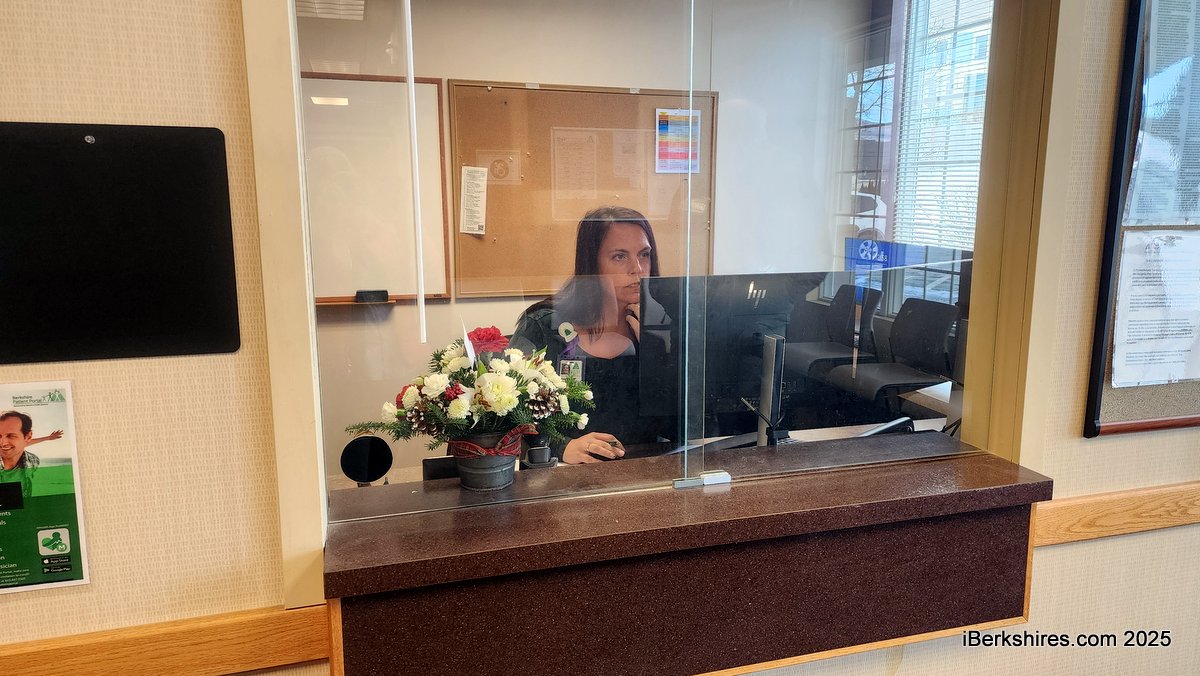
Williamstown Housing Trust Finalizes Homeowner Assistance Plan
 Williamstown Affordable Housing Trust Chairman Thomas Sheldon and Trustee Dick DeMayo review the minutes from a prior meeting. Williamstown Affordable Housing Trust Chairman Thomas Sheldon and Trustee Dick DeMayo review the minutes from a prior meeting. |
WILLIAMSTOWN MORTGAGE ASSISTANCE PROGRAM
Program Background
The Williamstown Affordable Housing Trust proposes to institute a program (“Program”) of assistance to would-be homeowners in Williamstown. The Program will be aimed at households with moderate income (as defined by the Program Guidelines) but able to meet the financing requirement of local lending institutions. Our aim is to add to the economic diversity of the Town’s population by making home ownership more accessible and affordable.
The Trust intends to keep the Program simple and streamlined—relying heavily on the lending institutions to determine which applicants appear to qualify for the Program and have the long-term capacity to meet the various costs of home ownership.
In furtherance of these objectives, the Trust has adopted the following guidelines for the Program. The Trust reserves the right, and indeed anticipates the future need, to refine and modify any and all aspects of the Program Guidelines as experience is gained in implementing the Program.
Program Guidelines
Eligibility: Applicants must (a) be “first-time homebuyers” as that term is defined under 42 U.S.C §12704(14) and interpreted by the lending institution; or (b) after having lost employment, be relocating to Williamstown in order to begin a new job located within fifty (50) miles of Williamstown; and (c) have family income at or below 80% of the Area Median Income, a number that varies according to family size (in 2014, for example, $51,150 for a family of two; $62,900 for a family of four). Family income comprises all sources of income received by the borrower(s) and spouses/partners. Applicants need not be residents of Williamstown but must purchase a home in Williamstown. Applicants must be approved for a mortgage by a lending institution with an office in Williamstown. The Trust will make a decision on the grant application based on a pre-qualification but will only fund a given grant at the time of closing. For grants which are to be expended in their entirety on the date of closing, the Trust anticipates making payment of grant funds to buyer’s counsel’s IOLTA account, to be disbursed with other funds at, but not before, the time of closing. For grants which are to be expended in whole or in part post-closing, the Trust anticipates the lending institution overseeing the post-closing disbursement of funds in accordance with such lender’s typical construction loan and/or escrow procedures, and in accordance with the terms and conditions of the grant.
Permissible Uses of Grant: Grant funds will be issued through the lending institution and may be used for these purposes:
Down payment
Closing costs
So-called “pre-paid” items including, without limitation: (i) the initial one-year up-front homeowner’s insurance cost; (ii) fuel oil adjustments made at the time of closing; (iii) real property tax adjustments made at the time of closing
Private mortgage insurance including advance payment of up to five years of insurance
Property tax escrow account
Homeowner’s insurance escrow account
Necessary repairs for safe habitation, such as roof, furnace, wiring, plumbing
Installations that promote energy efficiency and thereby reduce maintenance costs, such as insulation, energy efficient windows, high efficiency heating system
Note: Cosmetic or optional home improvements are NOT eligible expenses.
Qualifying Properties: Grants may be applied to the purchase of a single-family house, duplex, condominium, townhome or qualifying mobile home in Williamstown. Purchase of a newly constructed home is acceptable but a grant may not be used for construction costs and a certificate of occupancy will be required at closing. The property must be deemed affordable by the Trust according to Federal, Commonwealth and/or regional guidelines.
Repayment: Grant recipients who no longer live in the acquired property as a primary residence or no longer own such property within five years of purchase must repay the Trust a pro-rated amount corresponding to the remainder of five years, e.g., 40% repayment if residence ends in three years. The repayment obligation shall be secured by a second mortgage on the acquired property.
Grant Terms: Grants are for a maximum of $15,000 of eligible expenses and will be made on a first-come, first-served basis. Grants will be made as long as funds are available, as determined by the Trust.
Privacy / Anonymity: The Trust prefers not to know the identity of Grant applicants during the time the Trust is evaluating individual Grant proposals. Grant Applications will be made through participating lending institutions. Applicants will not make applications directly to or have direct communication with the Trust during the Trust’s Grant evaluation process.
Tags: affordable housing, affordable housing trust, homeowner, mortgage,
















